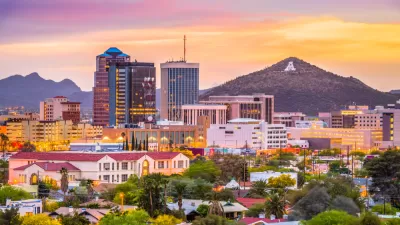New technology is allowing massive investment in oil drilling in North and South America, from Canada to Argentina. This article centers on the investment in the region's two largest economies, U.S. and Brazil, and its effect on energy geopolitics.
Colombia has joined the ranks of major oil exporters; there have been major discoveries in Argentina, and Chinese rigs are drilling in Cuba's waters. As the hemisphere produces more of its own oil, there is less reliance on the Mideastern supplies. The U.S. has reduced OPEC imports by over a million barrels a day since 2007.
"The hemisphere's oil boom is all the more remarkable given that two of its traditional energy powerhouses, Venezuela (considered to have larger oil reserves than Saudi Arabia) and Mexico, have largely been left out, held in check by entrenched resource nationalism.
The challenges of tapping Brazil's new offshore fields, located beneath 6,000 feet of water and salt beds formed by the evaporation of ancient oceans, are even greater (than those in North Dakota and Texas). Petrobras, which has ambitions of surpassing ExxonMobil as the world's largest publicly traded oil company, is investing more than $200 billion to meet its goals."
"To some degree, we're going to see a new rebalancing, with the Western Hemisphere moving back to self-sufficiency", said Daniel Yergin, an American oil historian. (See NYT book review of his latest book, The Quest).
Thanks to Mark Boshnack
FULL STORY: New Fields May Propel Americas to Top of Oil Companies’ Lists

Study: Maui’s Plan to Convert Vacation Rentals to Long-Term Housing Could Cause Nearly $1 Billion Economic Loss
The plan would reduce visitor accommodation by 25,% resulting in 1,900 jobs lost.

Alabama: Trump Terminates Settlements for Black Communities Harmed By Raw Sewage
Trump deemed the landmark civil rights agreement “illegal DEI and environmental justice policy.”

Why Should We Subsidize Public Transportation?
Many public transit agencies face financial stress due to rising costs, declining fare revenue, and declining subsidies. Transit advocates must provide a strong business case for increasing public transit funding.

Paris Bike Boom Leads to Steep Drop in Air Pollution
The French city’s air quality has improved dramatically in the past 20 years, coinciding with a growth in cycling.

Why Housing Costs More to Build in California Than in Texas
Hard costs like labor and materials combined with ‘soft’ costs such as permitting make building in the San Francisco Bay Area almost three times as costly as in Texas cities.

San Diego County Sees a Rise in Urban Coyotes
San Diego County experiences a rise in urban coyotes, as sightings become prevalent throughout its urban neighbourhoods and surrounding areas.
Urban Design for Planners 1: Software Tools
This six-course series explores essential urban design concepts using open source software and equips planners with the tools they need to participate fully in the urban design process.
Planning for Universal Design
Learn the tools for implementing Universal Design in planning regulations.
Smith Gee Studio
Alamo Area Metropolitan Planning Organization
City of Santa Clarita
Institute for Housing and Urban Development Studies (IHS)
City of Grandview
Harvard GSD Executive Education
Toledo-Lucas County Plan Commissions
Salt Lake City
NYU Wagner Graduate School of Public Service




























